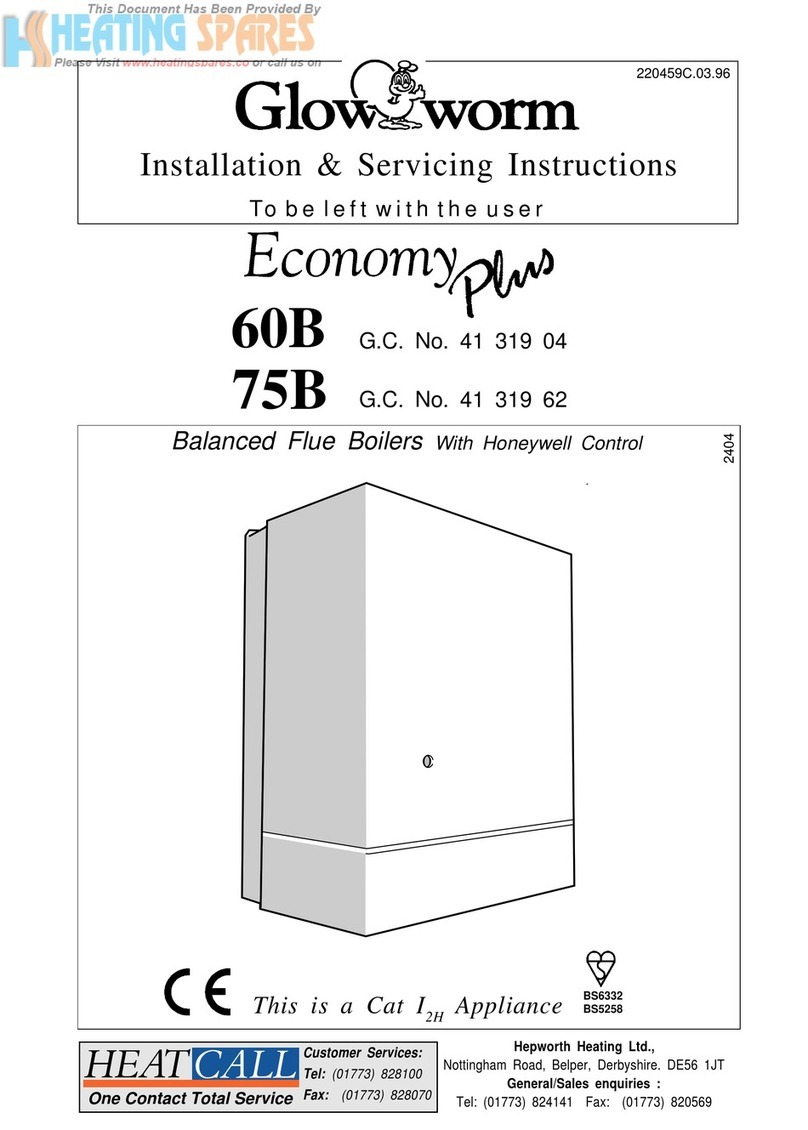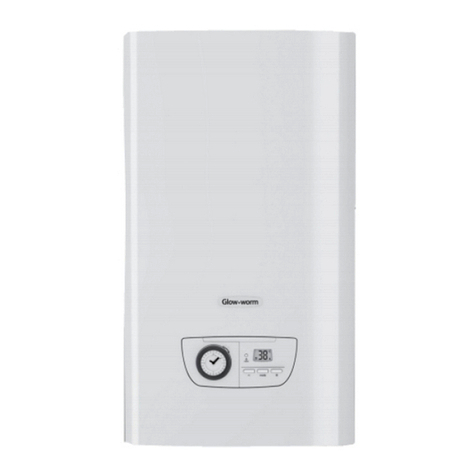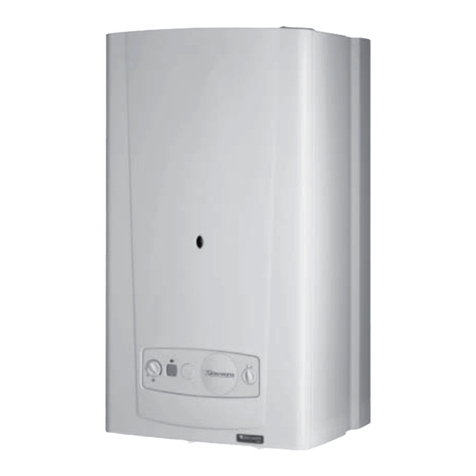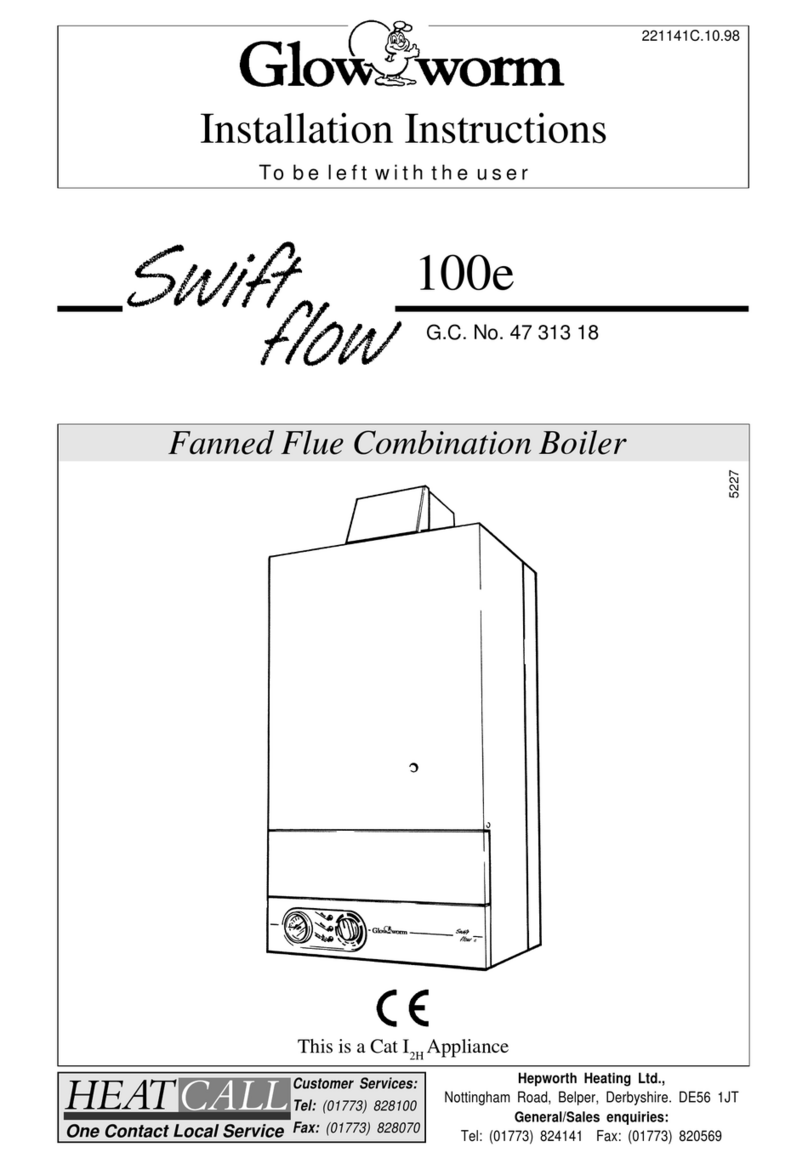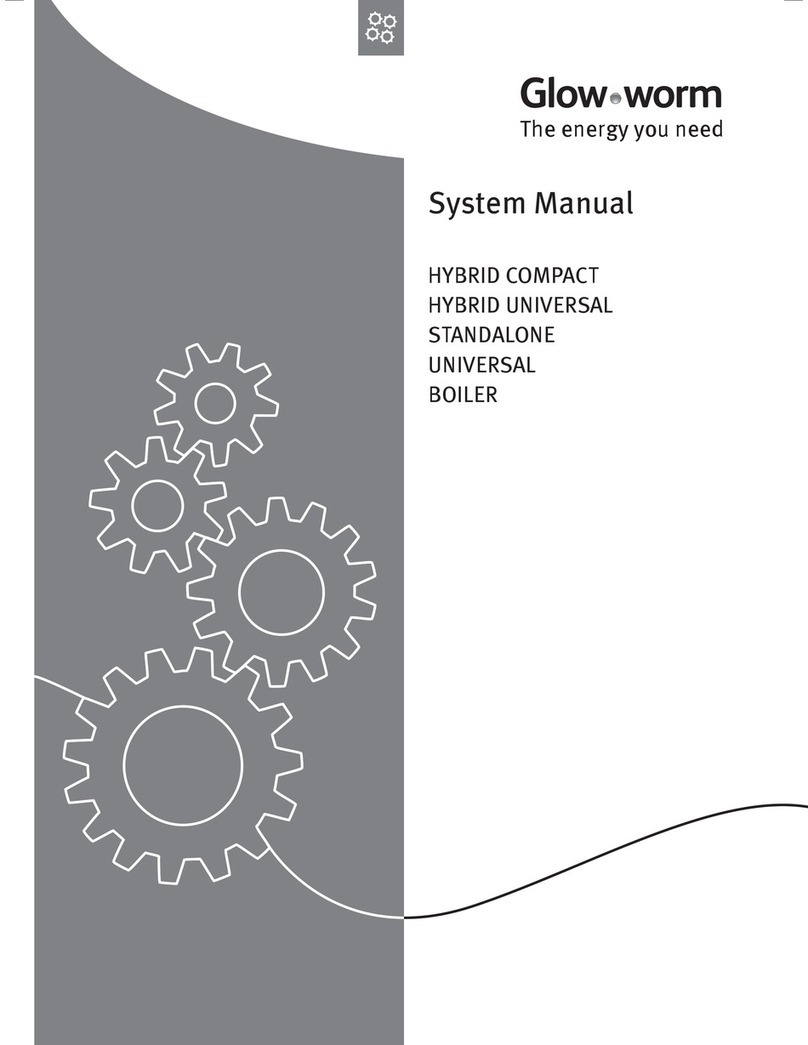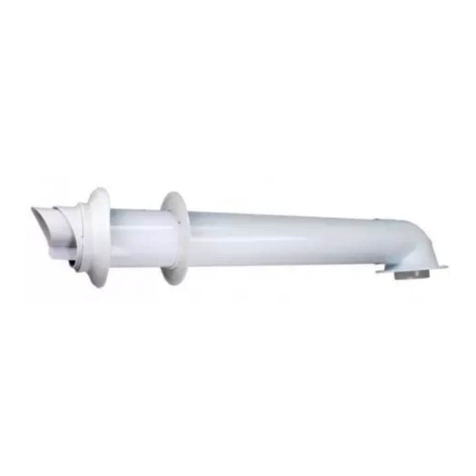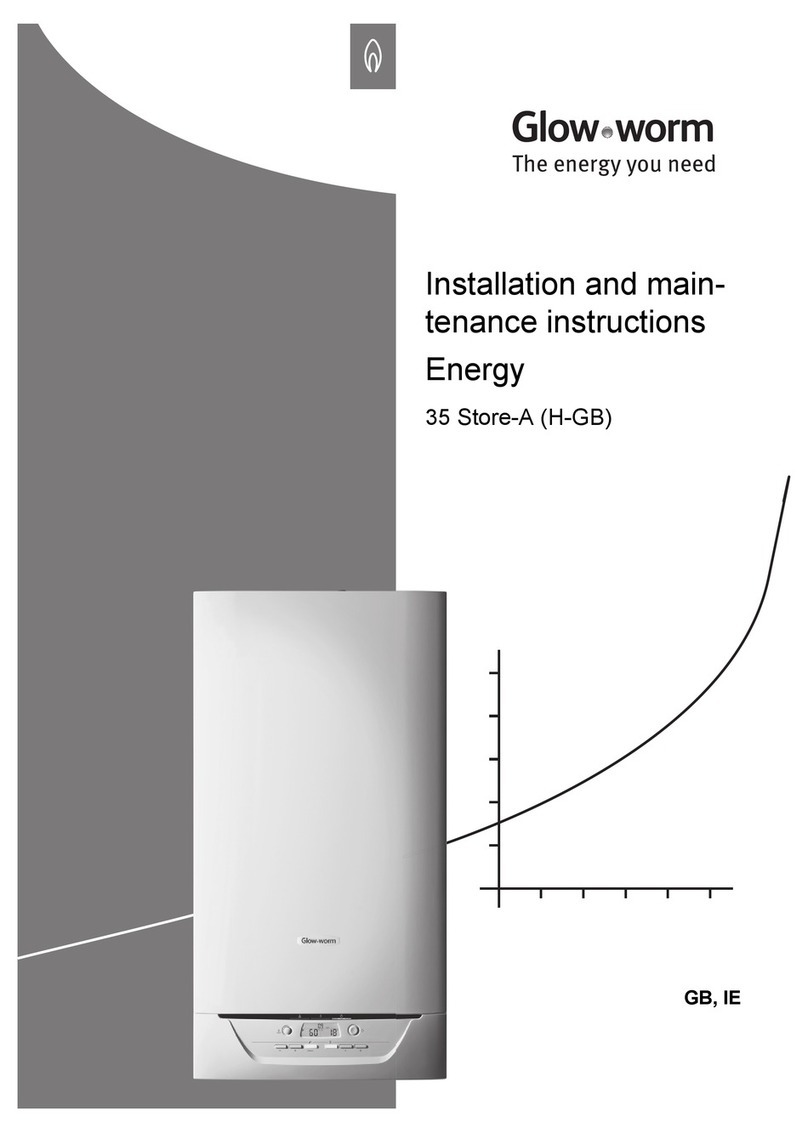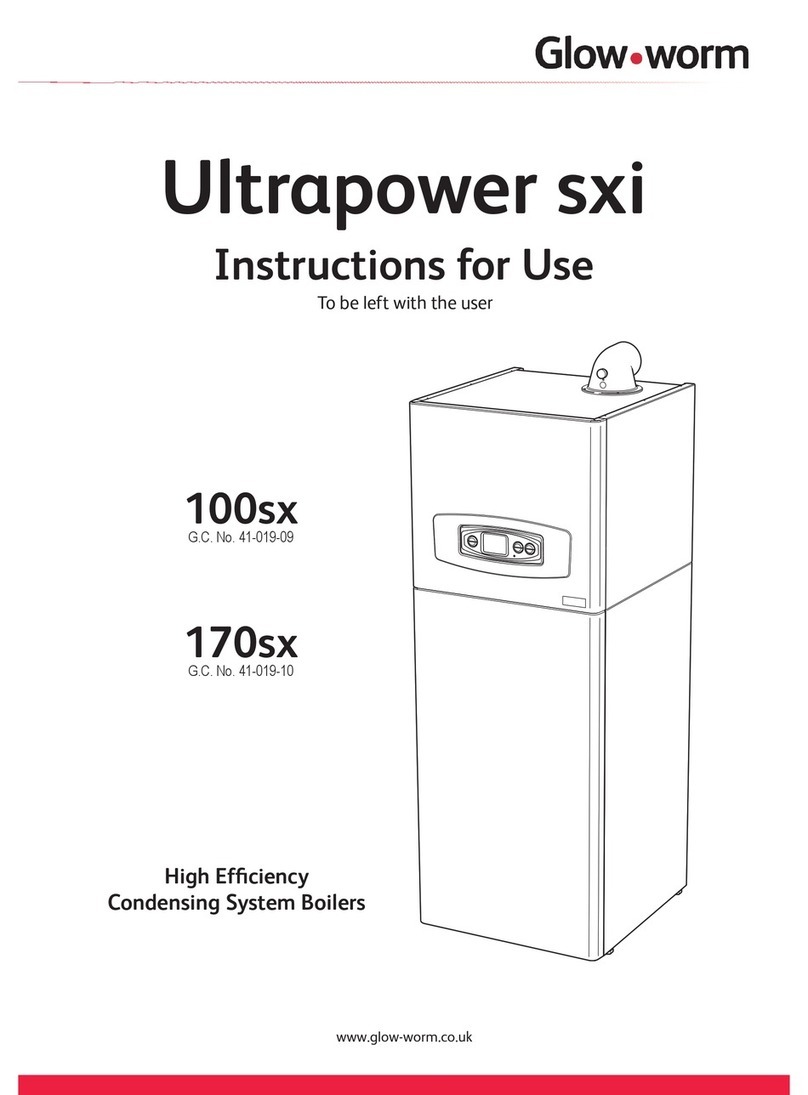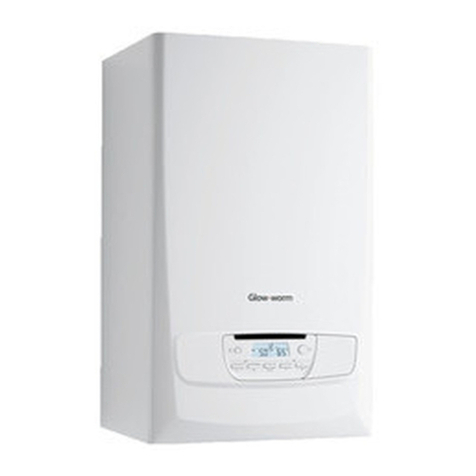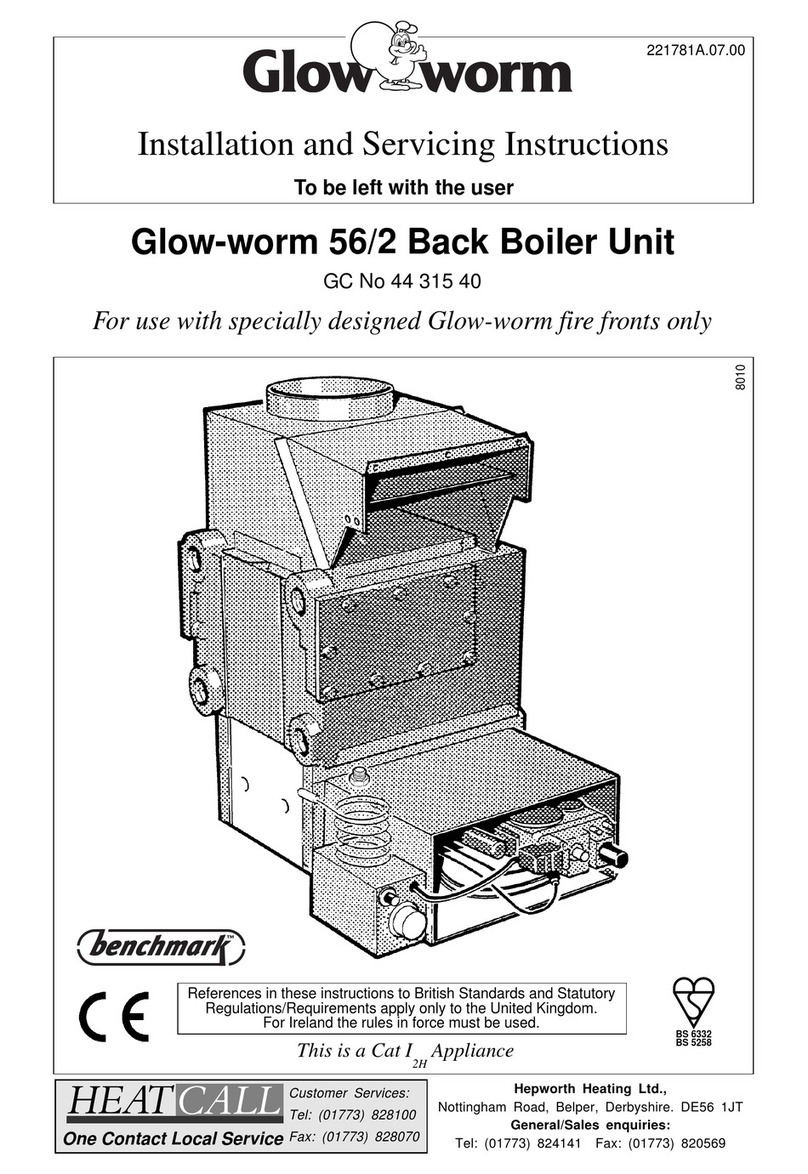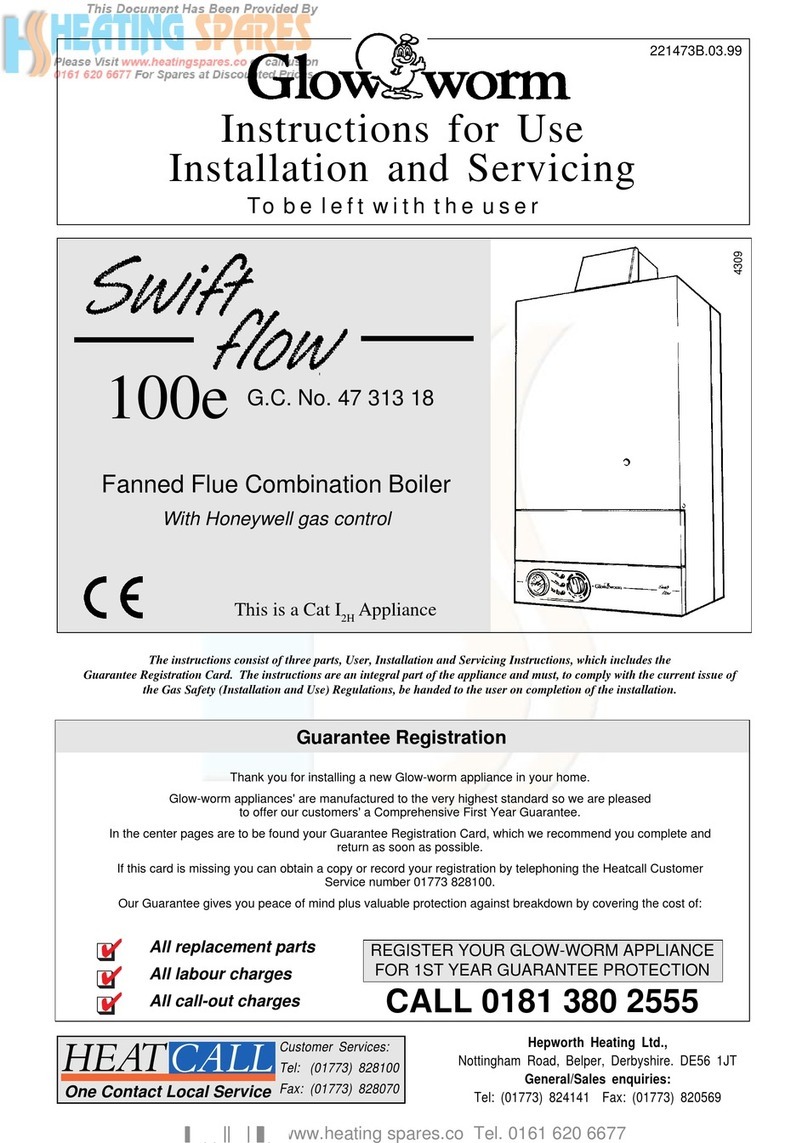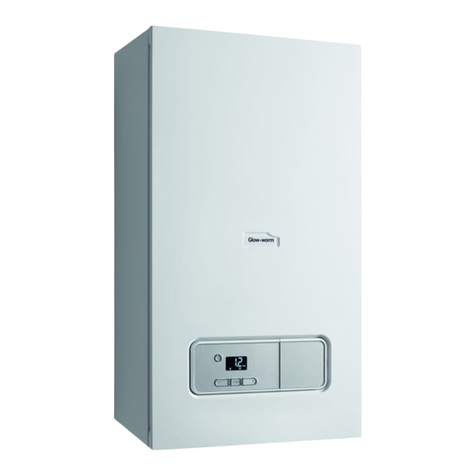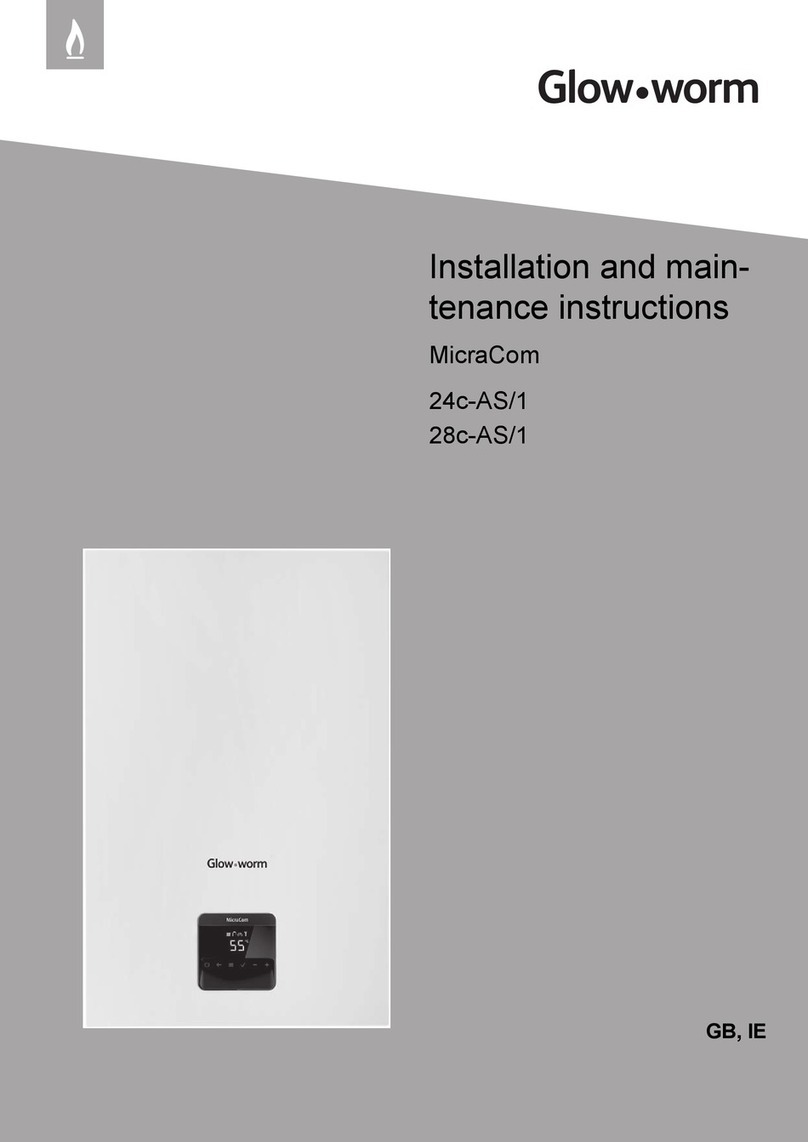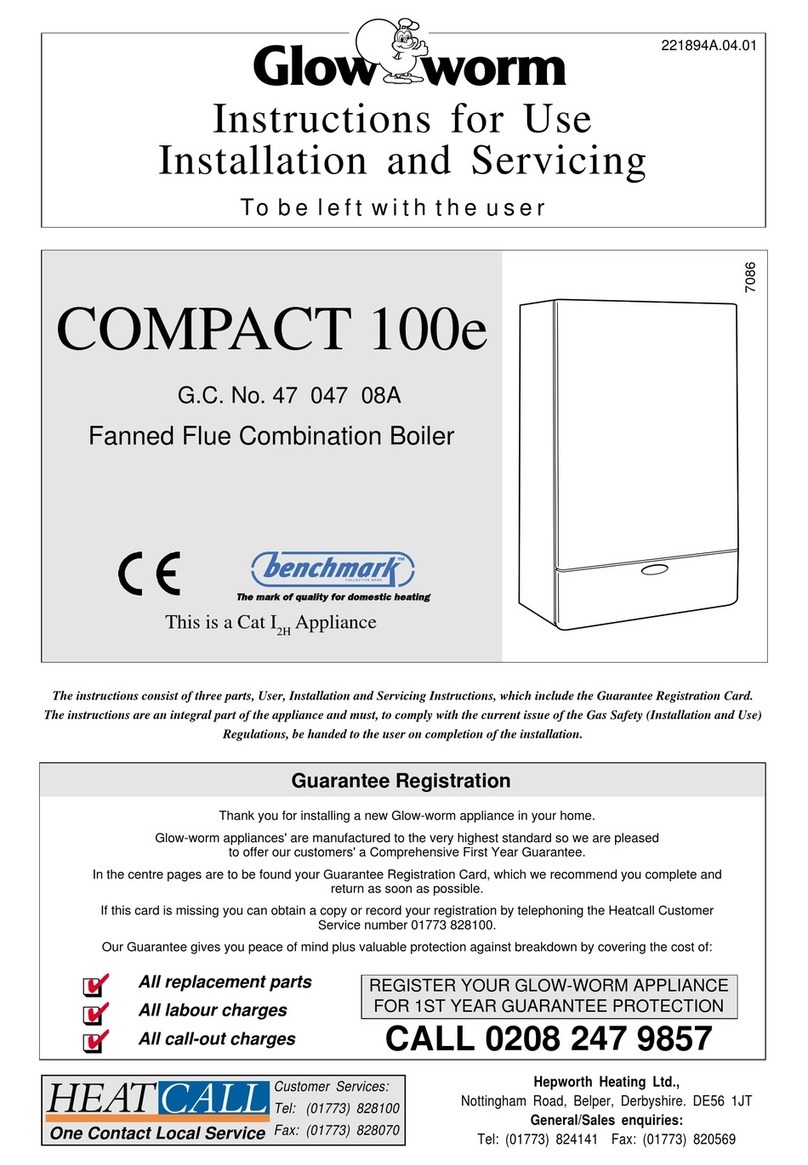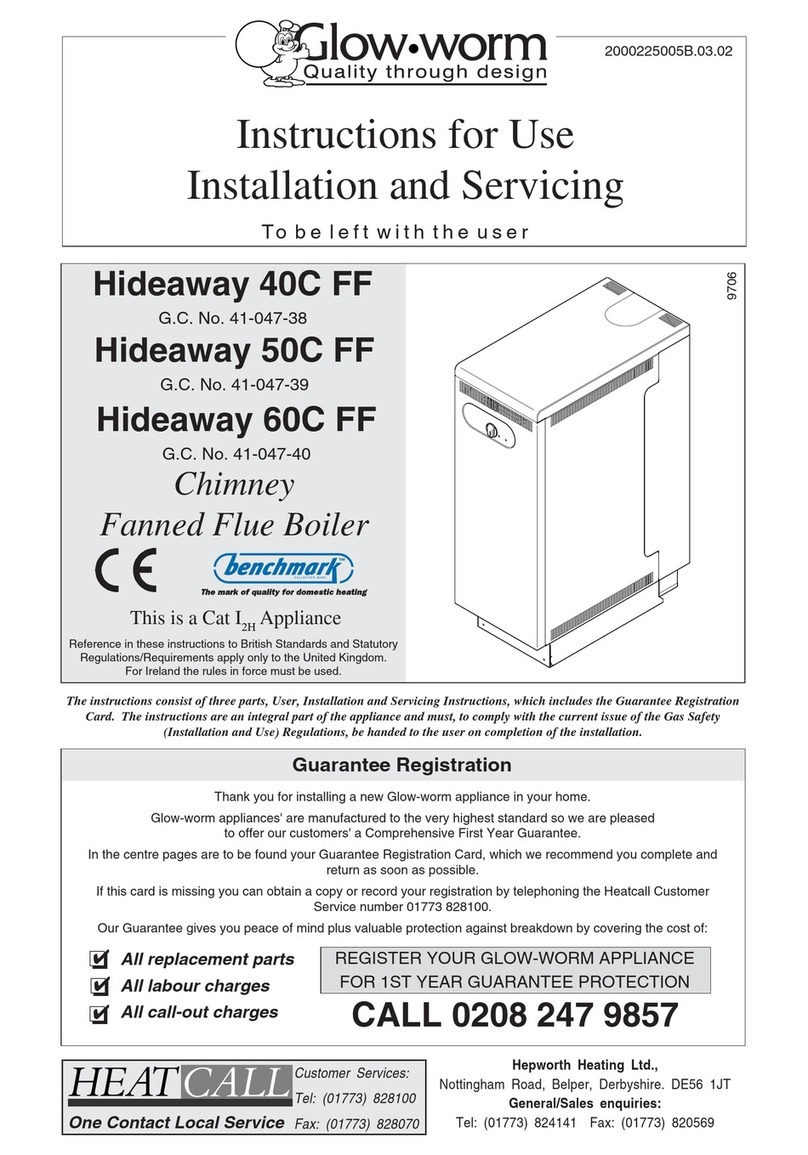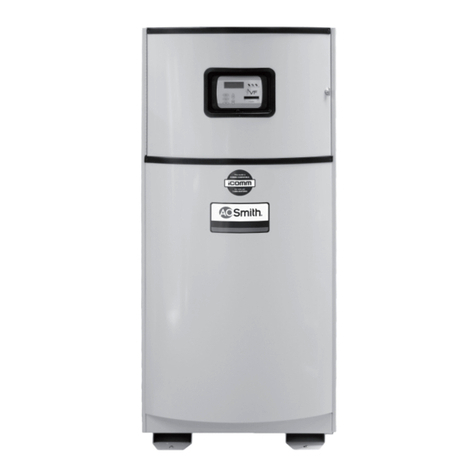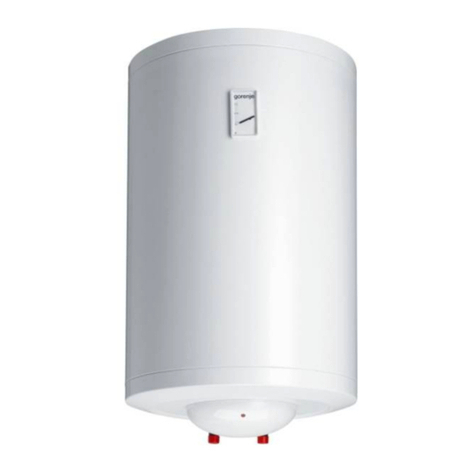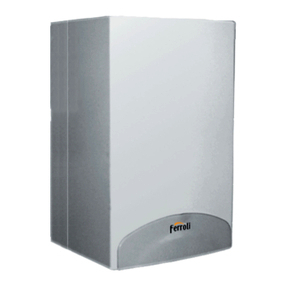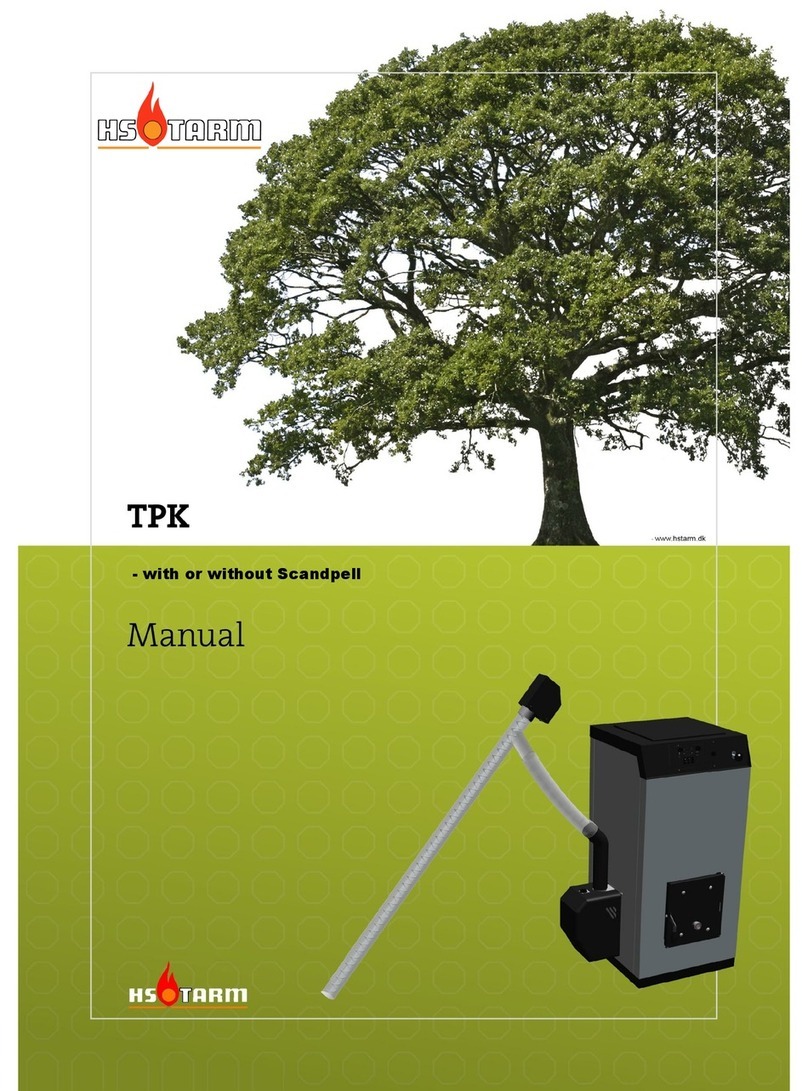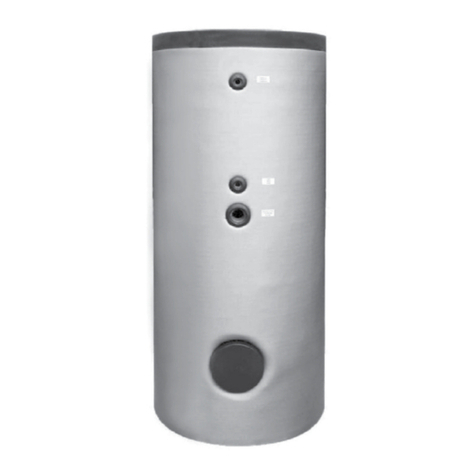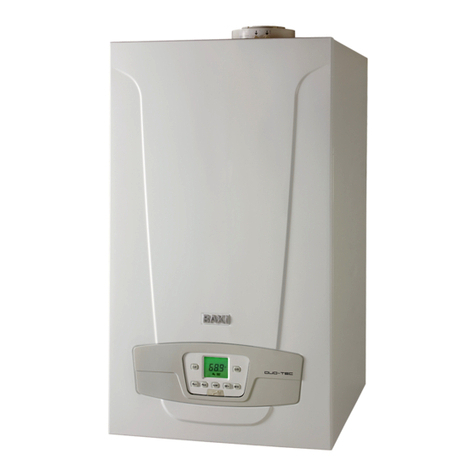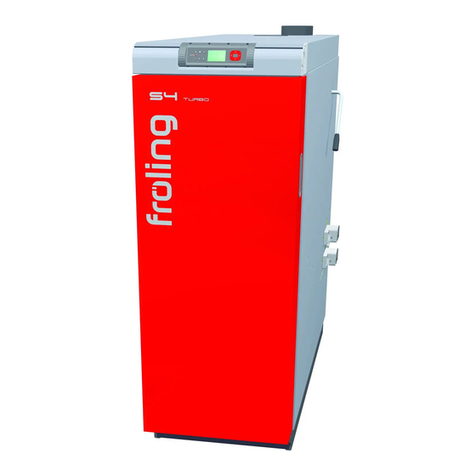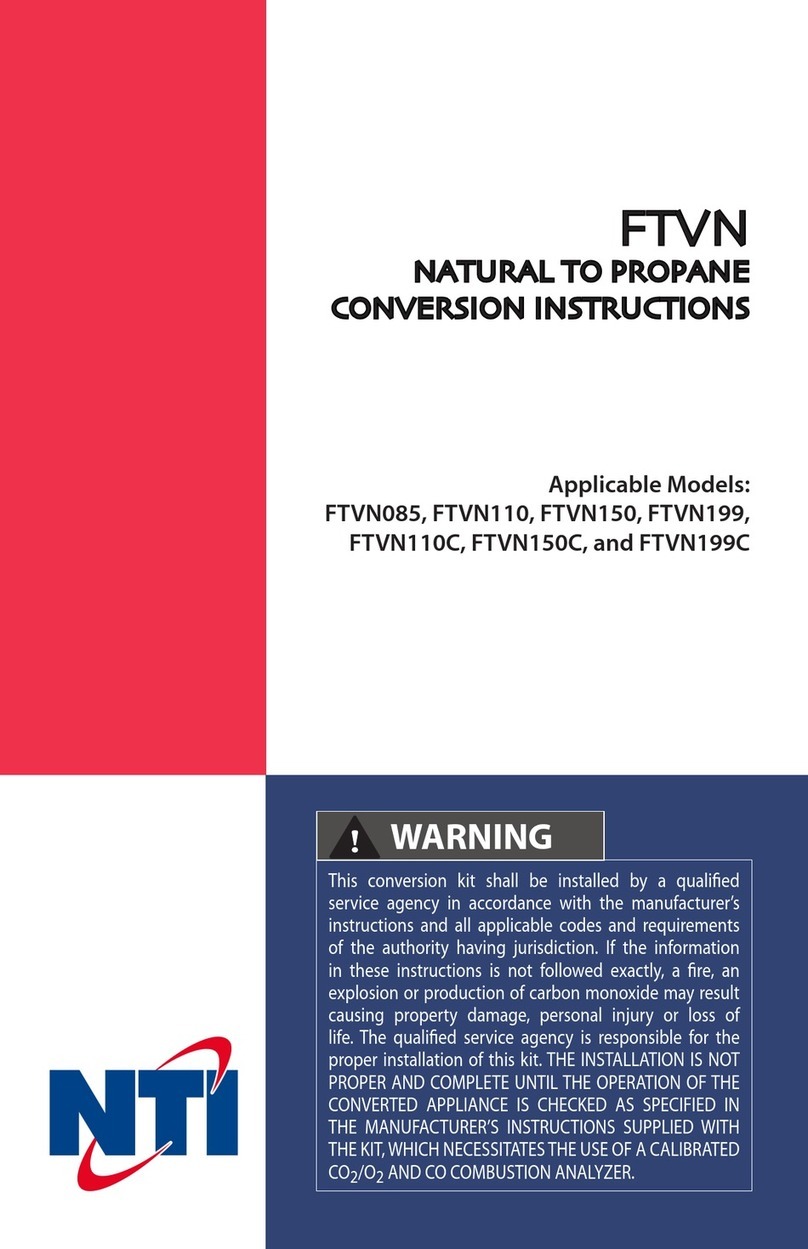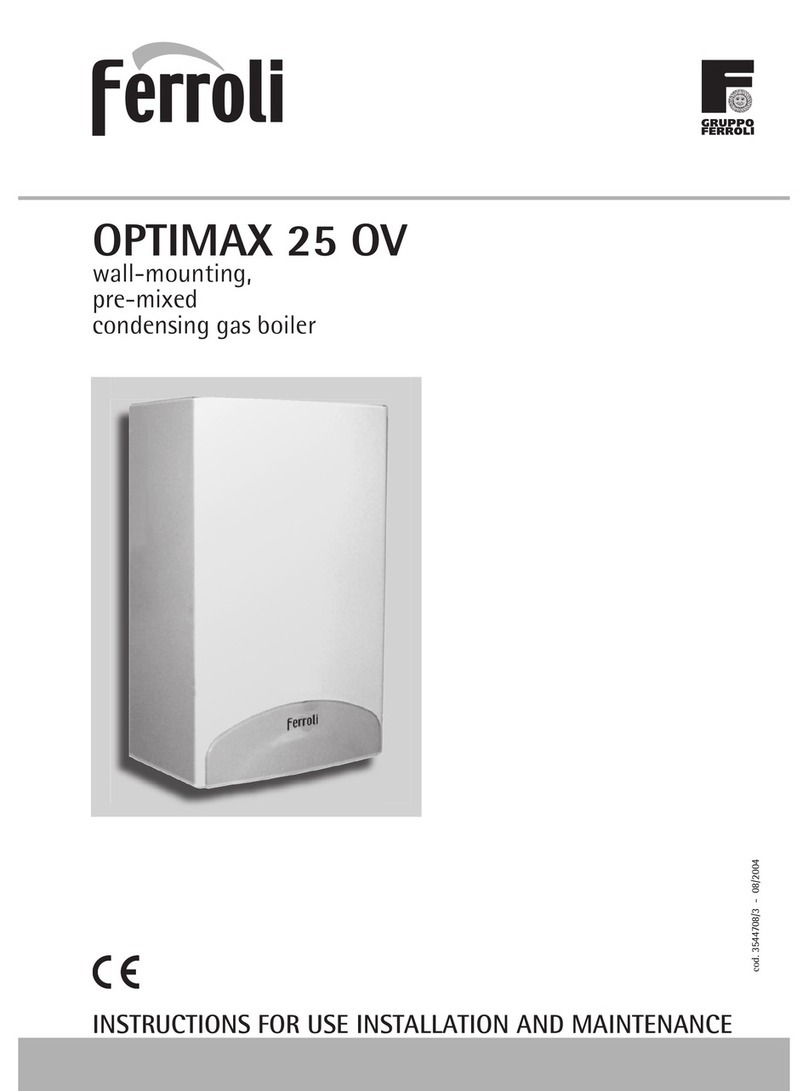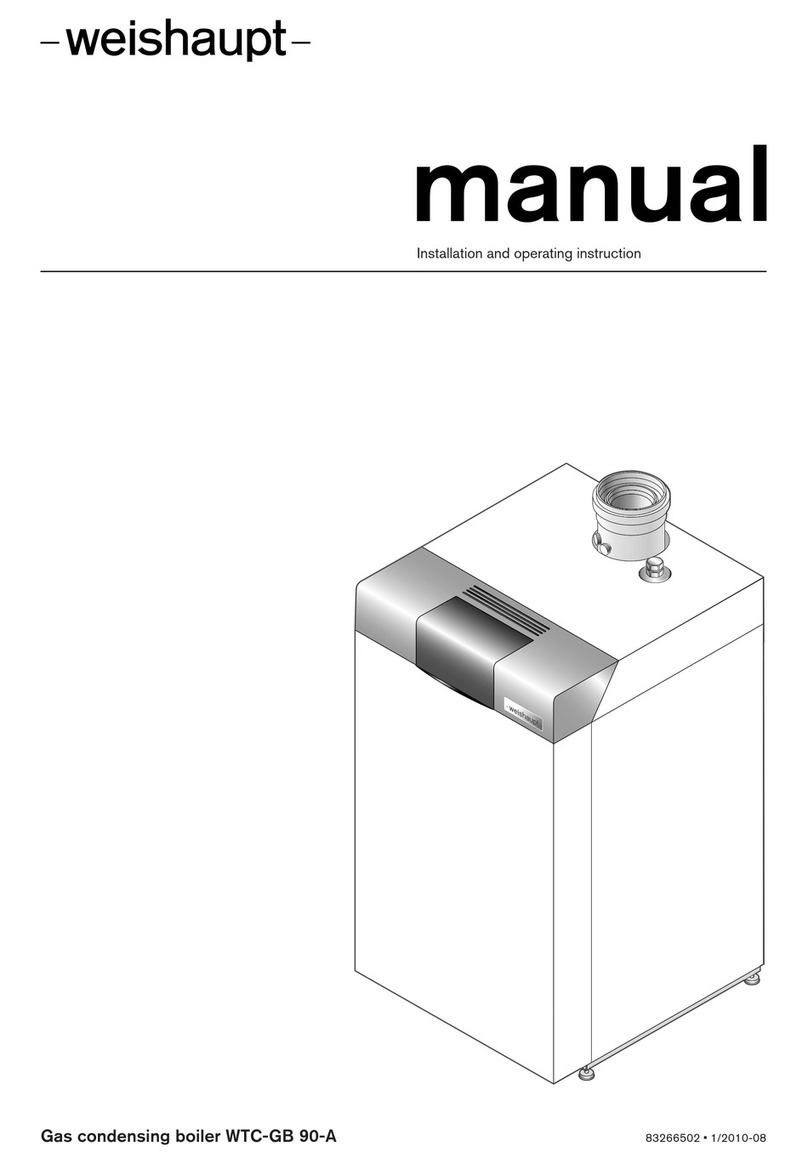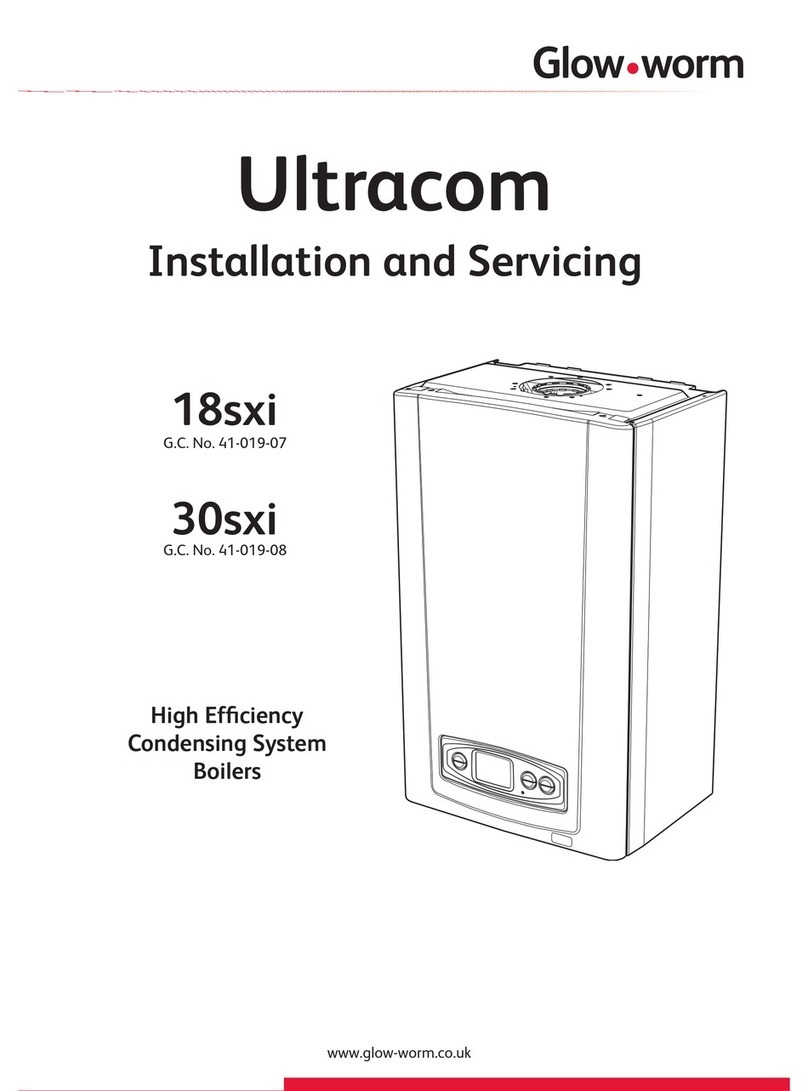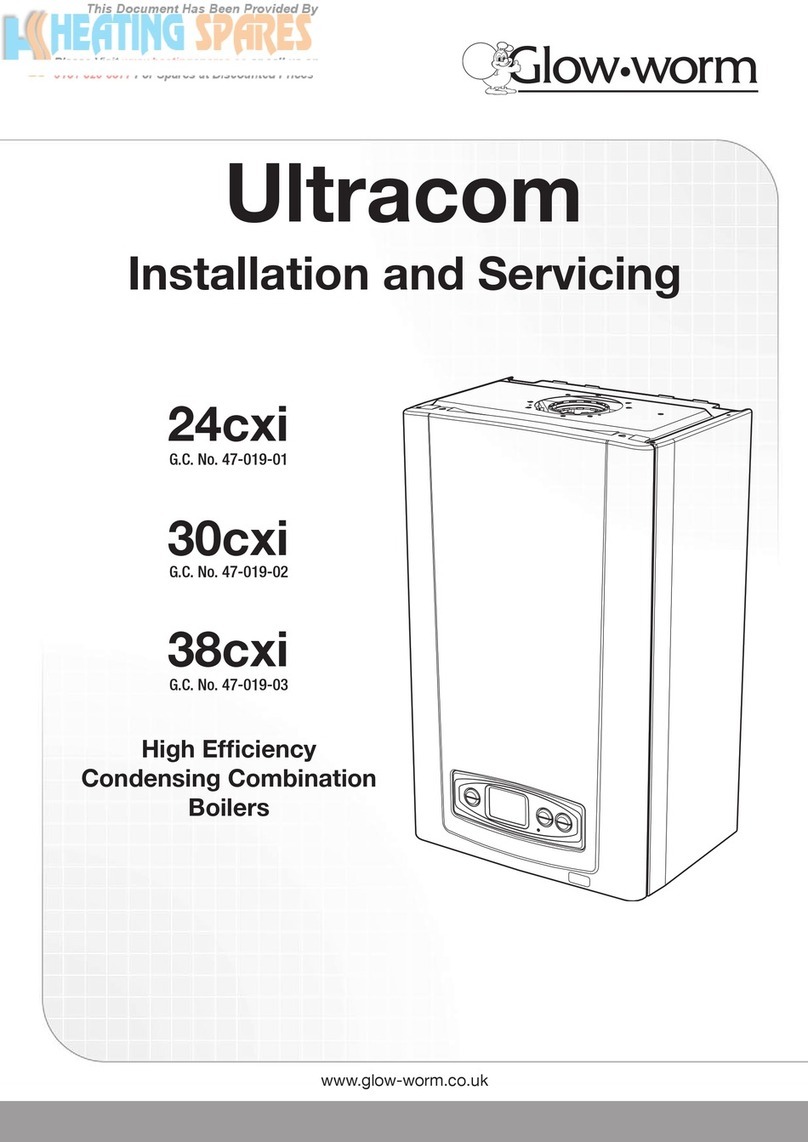18
1
2
Diagram 8.2
8 Safety Discharge, Condensate and Tundish Connections
8.3 Tundish discharge
The internal safety valves, 24 and 36 have been tee’d to-
gether and the discharge pipe run so that it exits at the right
hand bottom of the boiler ( Block diagram) 11.8.
The tundish (supplied) must be used with this outlet within the
normal guidelines and code of practice and must be installed
so that it is visible to the occupants and positioned away from
any electrical devices.
It is necessary, during installation, to connect a 22 mm diameter
metal discharge pipe to a suitable position outside the building.
It is permissible to use copper pipe.
WARNING: The discharge pipe from the tundish should terminate
in a safe place where there is no risk to persons in the vicinity
of the discharge, be of metal and:
Be at least one pipe size larger than the nominal outlet size of
the safety device unless its total equivalent hydraulic resistance
exceeds that of a straight pipe 9m long i.e. discharge pipes
between 9m and 18m equivalent resistance length should be
at least larger than the nominal outlet size of the safety device,
between 18m and 27m at least 3 sizes larger, and so on.
Bends must be taken in to account in calculating the ow
resistance.
Have a vertical section of pipe at least 300mm long, below the
tundish before any elbows or bends in the pipework.
Be installed with a continuous fall.
Be positioned away from any electrical appliances.
Have discharges visible at both the tundish and the nal point of
discharge but where this is not possible or practically difcult there
should be clear visibility at one or these of these locations.
Examples of acceptance discharge arrangements are:
Ideally below a xed grating and above the waterseal in a
trapped gully.
Downward discharges at a low level; i.e. up to 100mm above
external surfaces such as car parks, hard standing, grassed
areas etc. are acceptable providing that where children may
play or otherwise come in to contact with discharges, a wire
cage or similar guard is positioned to prevent contact, whilst
maintaining visibility.
Discharges at high level; e.g into metal hopper and metal
down pipe with the end of the discharge pipe clearly visible
(tundish visible or not) or into a roof capable of withstanding
high temperature discharges of water and 3m from any plastics
guttering systems that would collect such discharges (tundish
visible).
Where a single pipe serves a number of discharges, such as
in blocks of ats, the number served should be limited to not
more than 6 systems so that any installation can be traced
reasonably easily.
The single common discharge pipe should be least one pipe
size larger then the largest individual discharge pipe to be
connected.
If unvented hot water storage systems are installed where
discharges from safety devices may not be apparent i.e.
in dwellings occupied by blind, inrm or disabled people,
consideration should be given to the installation of an electronically
operated device to warn when discharge takes place.
NOTE: the discharge will consist of scalding water and steam.
Asphalt, roong felt and non-metallic rainwater goods may be
damaged by such discharges.
WARNING: This appliance must be earthed. Incorrect installation
can cause electric shock or appliance damage.
This appliance must be wired in accordance with these
instructions.
Any fault arising from incorrect wiring cannot be put right under
the terms of the Glow-worm guarantee.
All system components must be of an approved type.
Electrical components have been tested to meet the equivalent
requirements of the BEAB.
Do not interrupt the mains supply with a time switch or
programmer.
Connection of the whole electrical system and any heating
system controls to the electrical supply must be through a
common isolator.
Isolation should preferably be by a double pole switched fused spur
box having a minimum contact separation of 3mm on each pole.
The fused spur box should be readily accessible and preferably
adjacent to the boiler. It should be identied as to its use.
8.2 Condensate Drain Connection
Condensate should, if possible, be discharged into the internal
household draining system. If this is not practical, discharge
can be made externally into the household drainage system or
a purpose designed soak away, see diagram 8.4 for more details
Connect the exible pipe to the condensate drain exible
connection pipe supplied (1). Ensure there is a continual fall of
2.5° (44 mm/m).
(Do not use copper pipes).
It is recommended that any external condensate drain pipe is
insulated and also preferably of 32mm diameter, to prevent
freezing in adverse weather conditions.
The condensate is discharged periodically in ‘slugs’ by siphonic
action.
It is not necessary to provide air breaks or extra traps in the
discharge pipe as there is already a trap inside the boiler, see
diagram 8.2.
Fitting an extra trap may cause the boiler siphon to work incorrectly.
IMPORTANT NOTE:
The oat of the condensate trap also ensures fume tightness.
Therefore, it is not necessary to add water in the condensate trap.
Refer to BS5546 or BS6798 for advice on disposal of boiler
condensate.




















